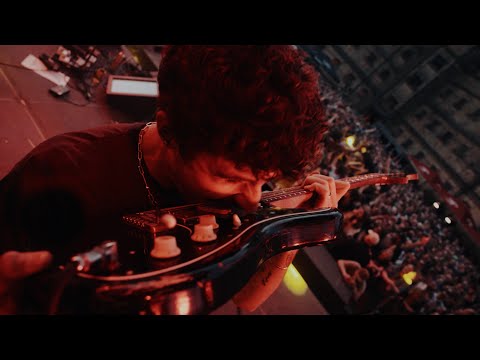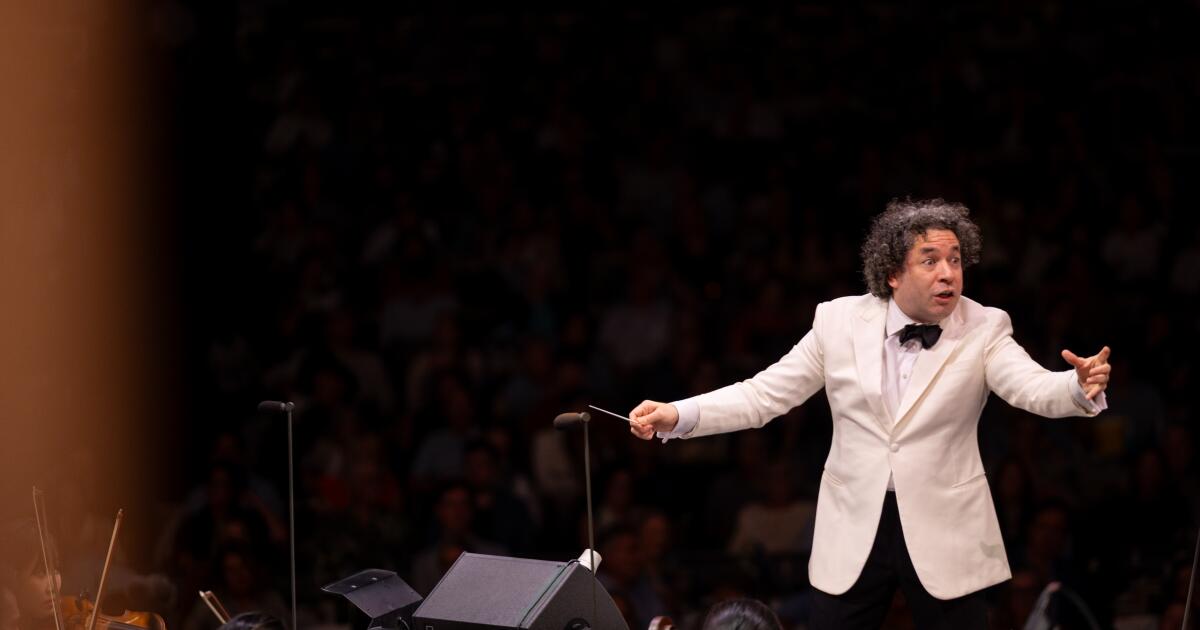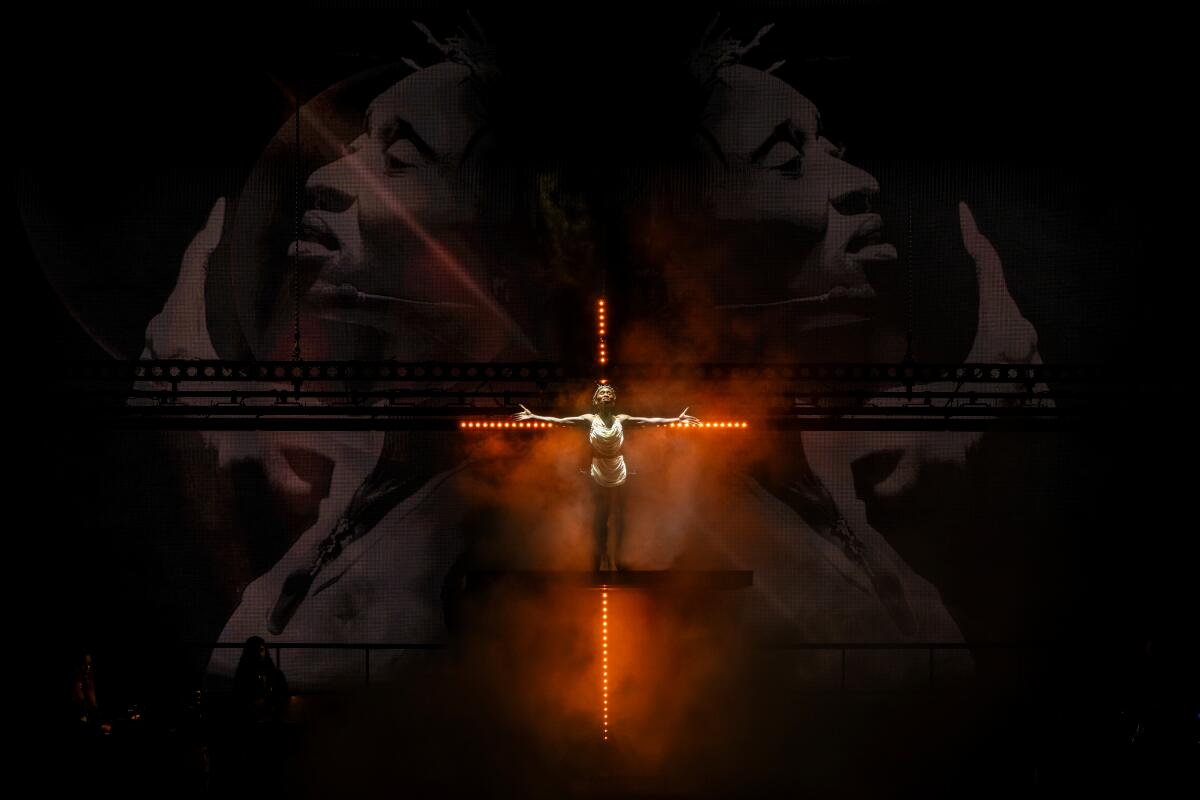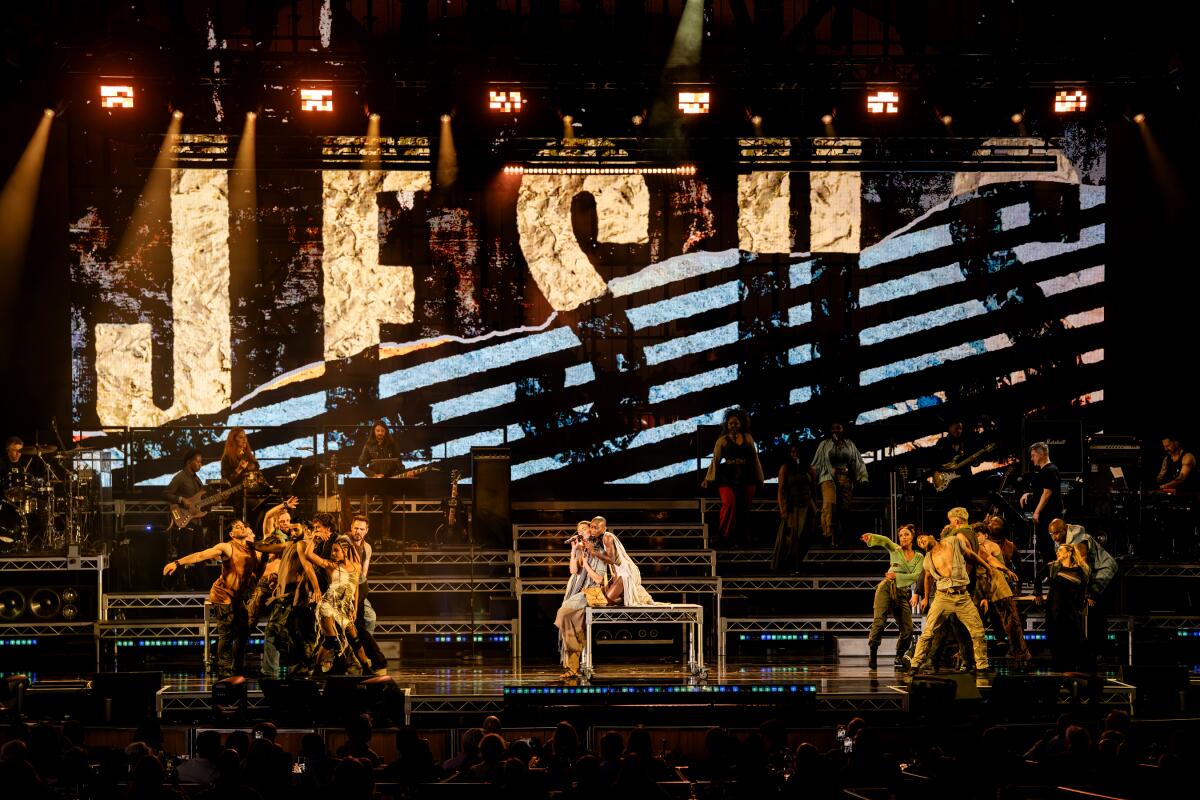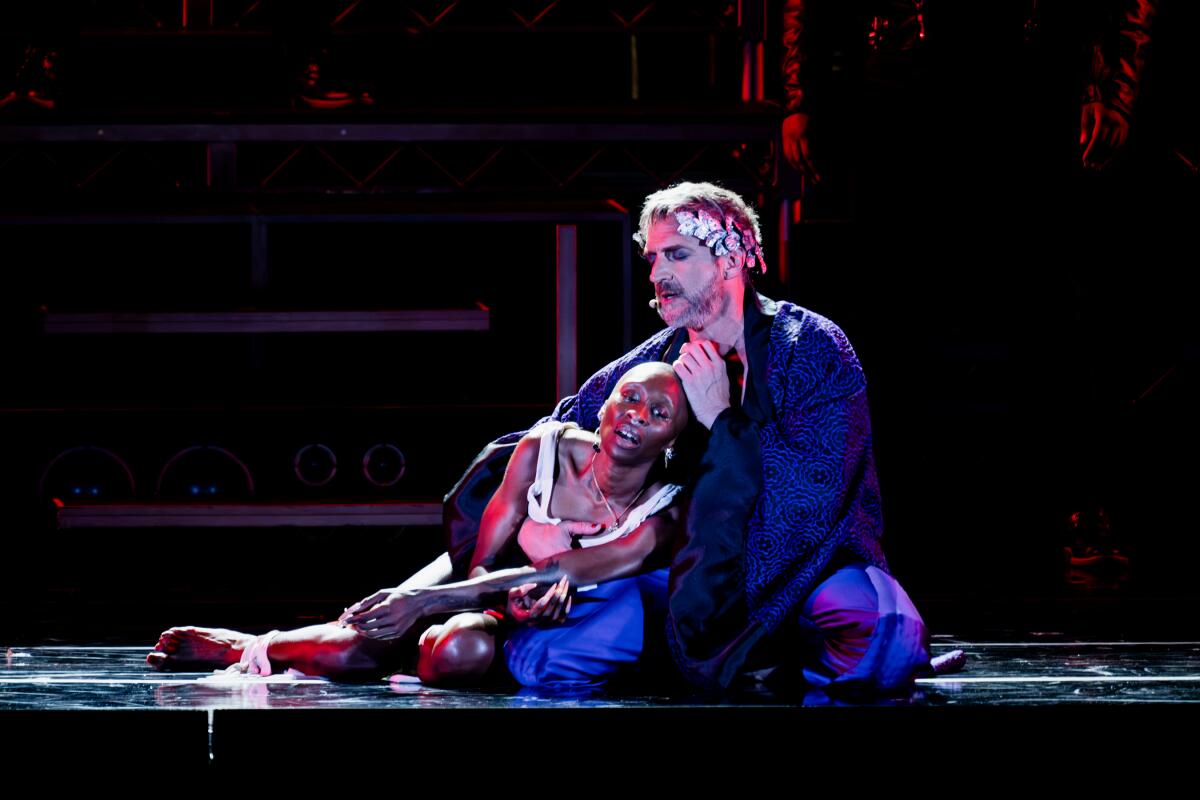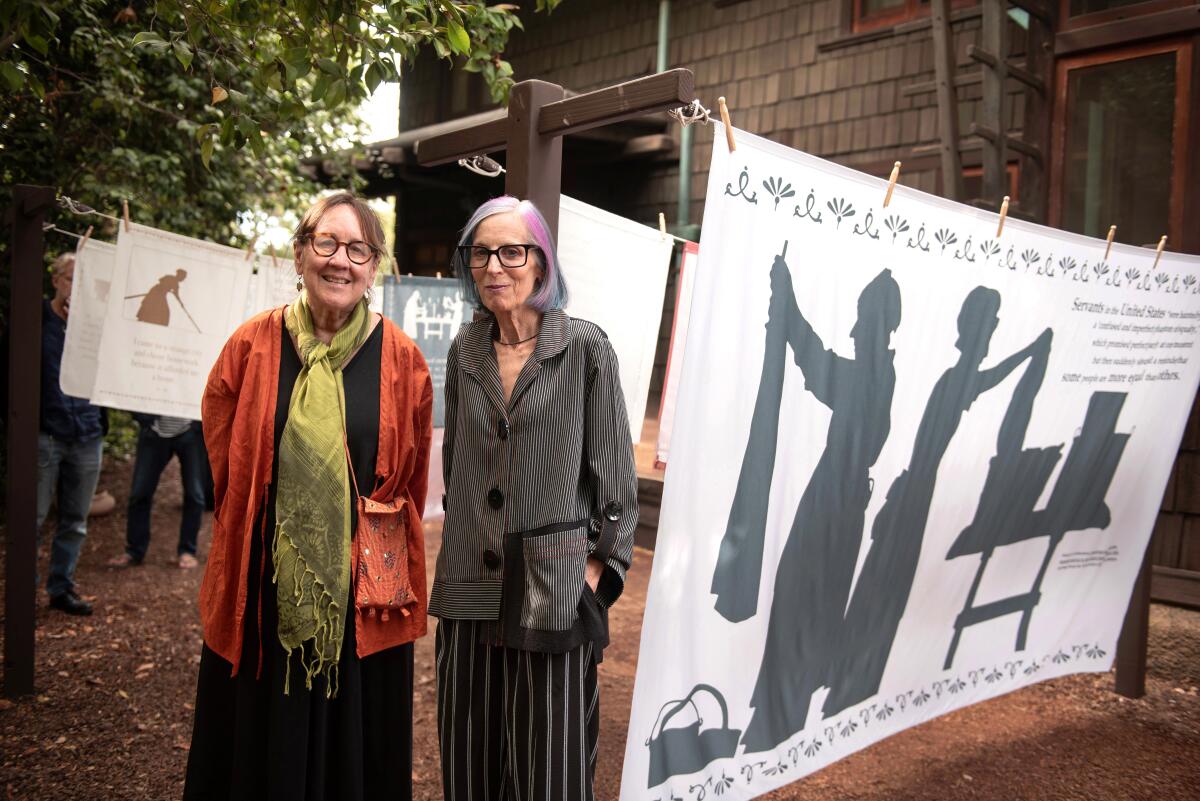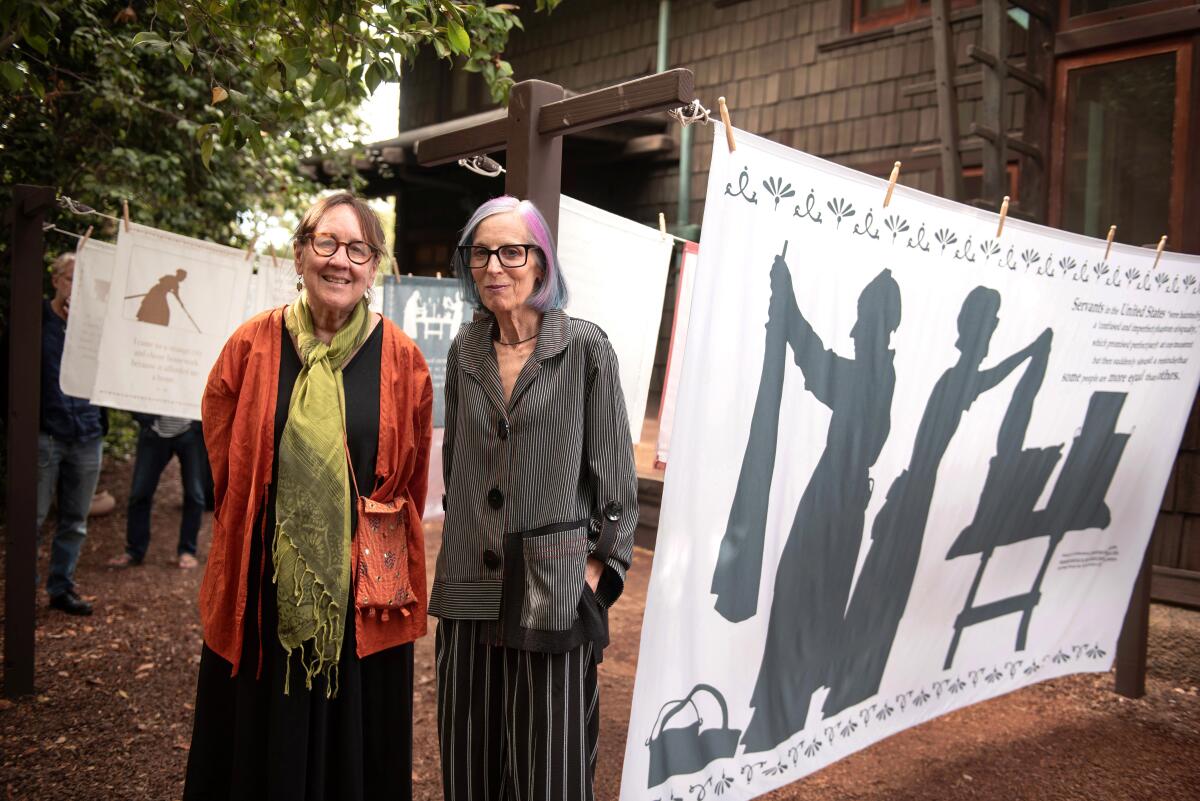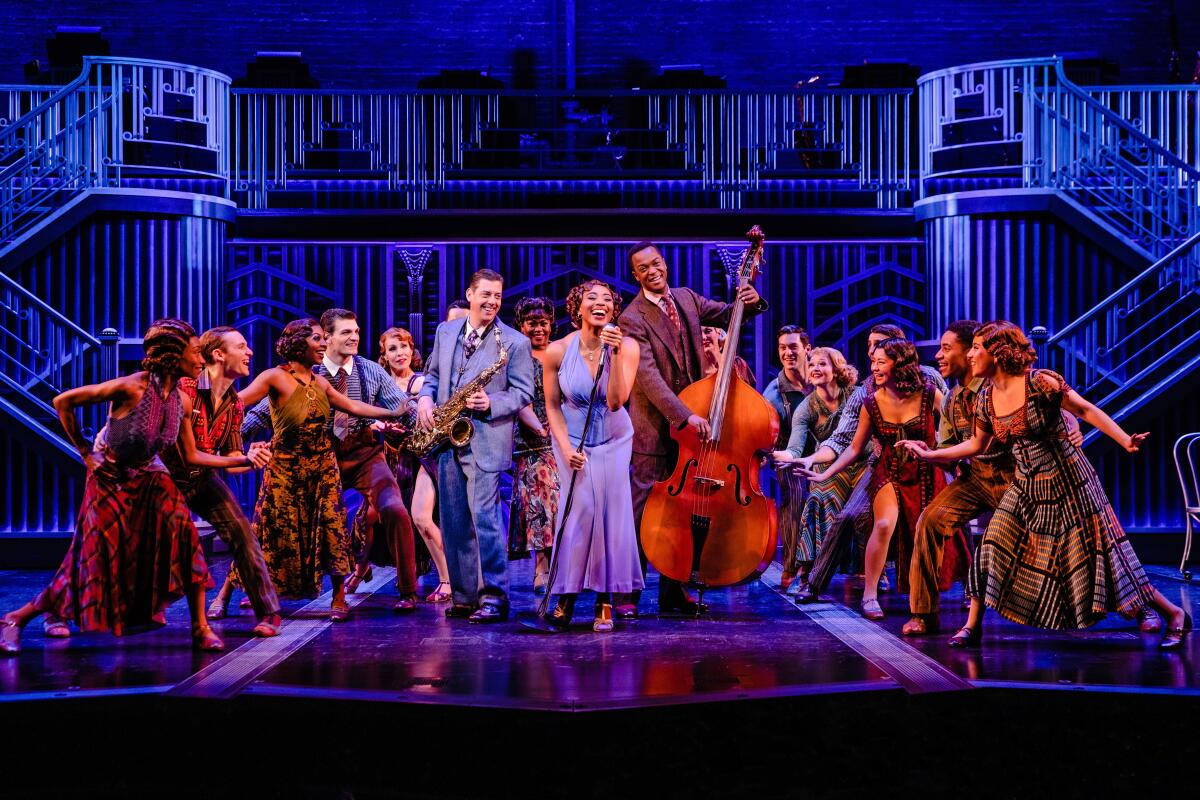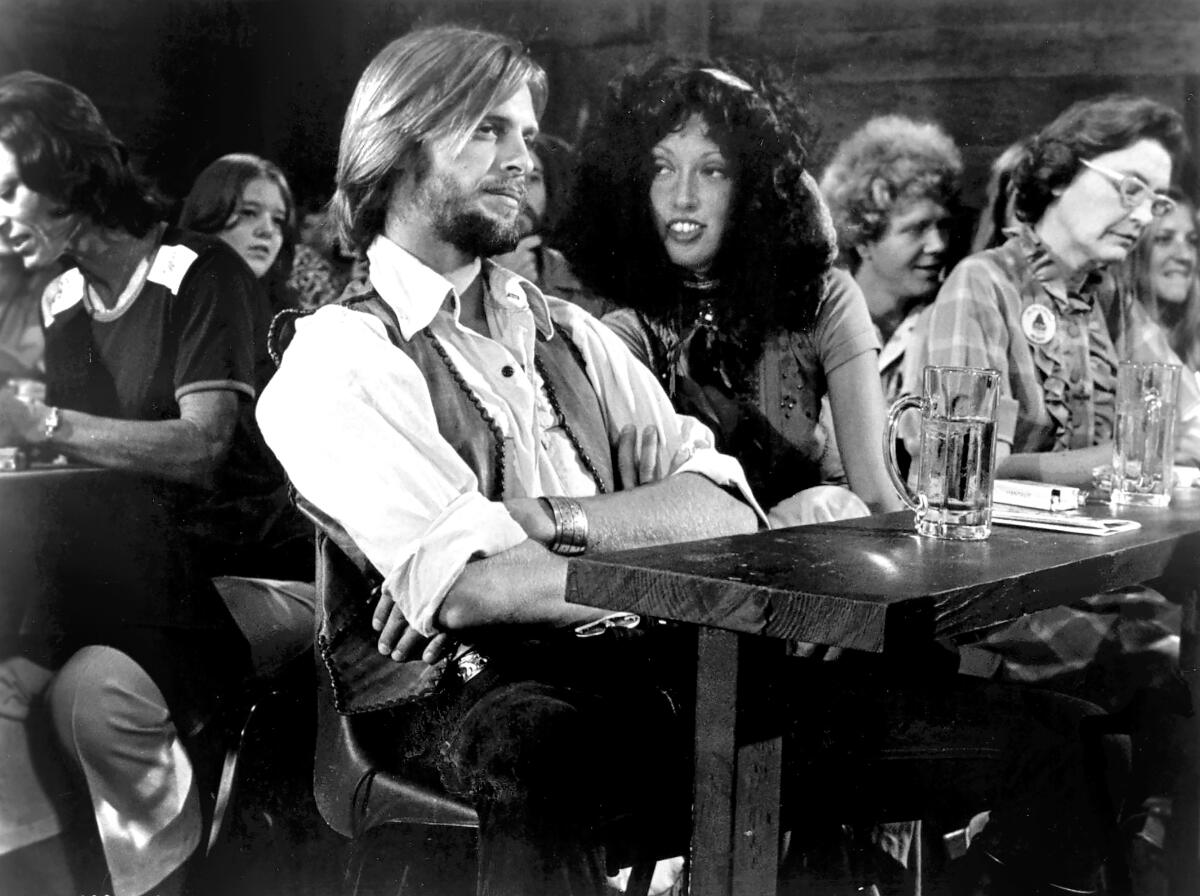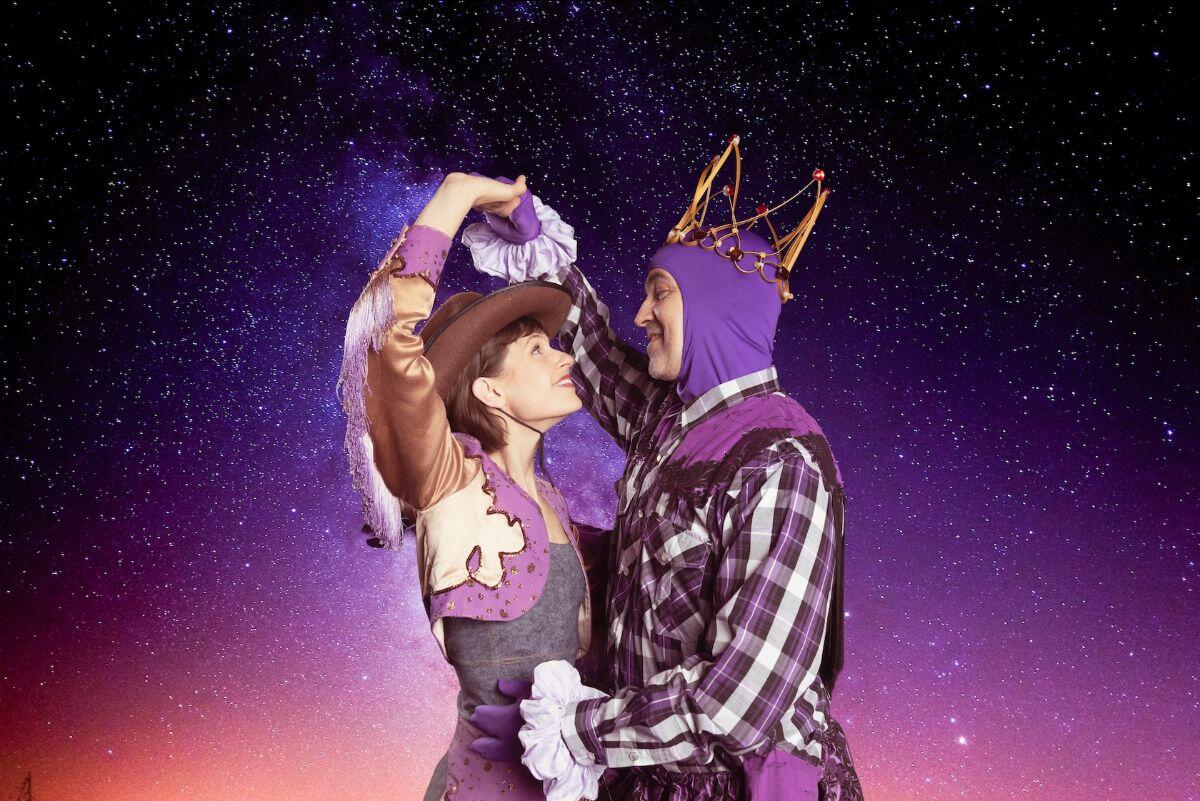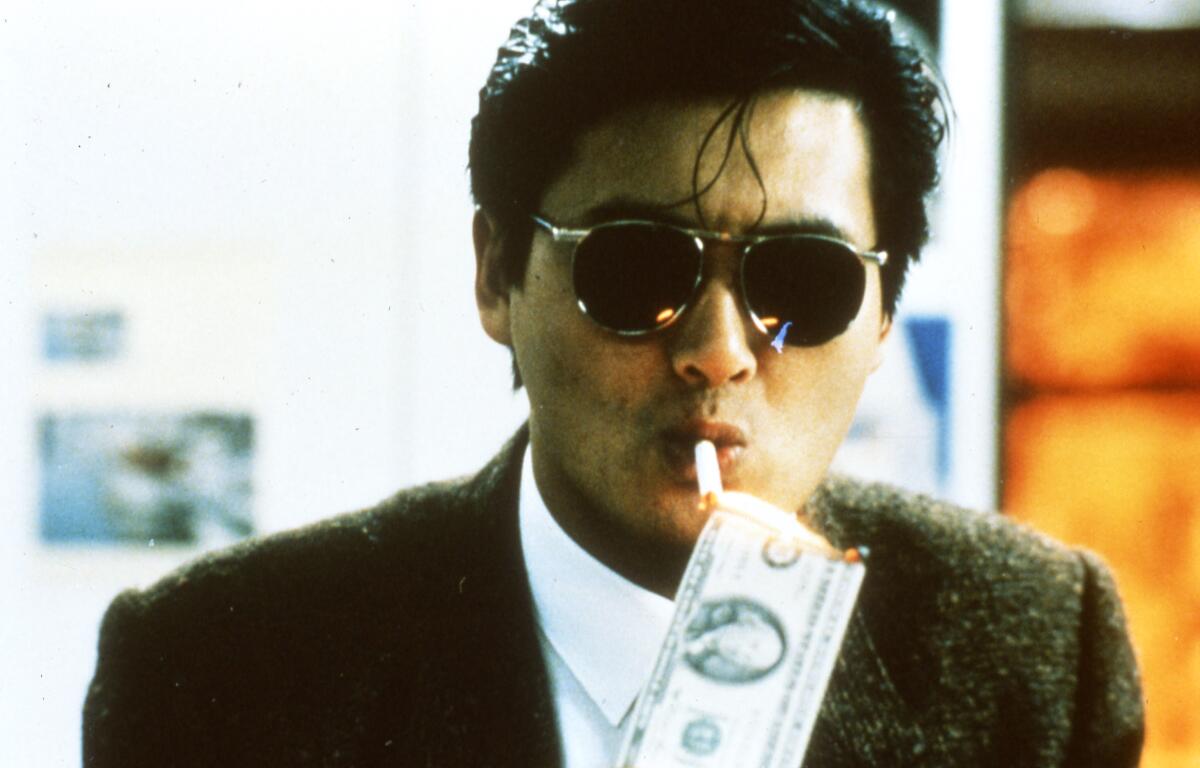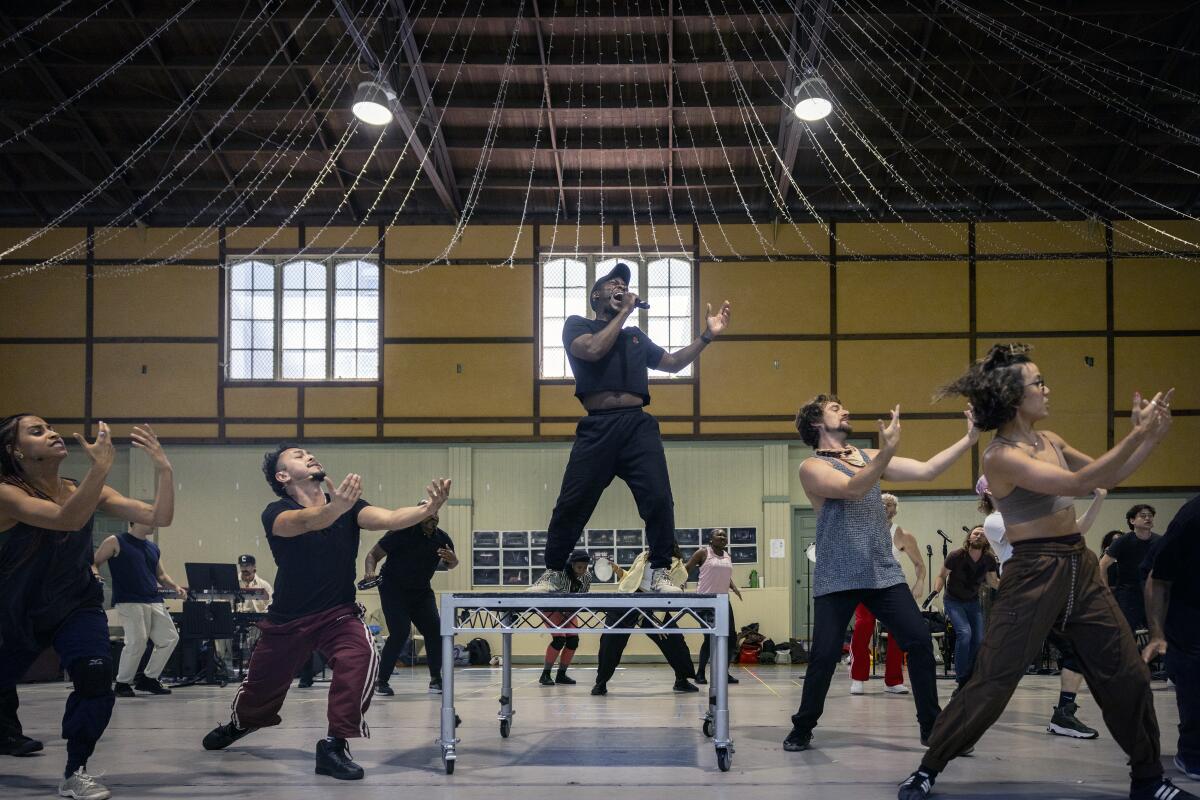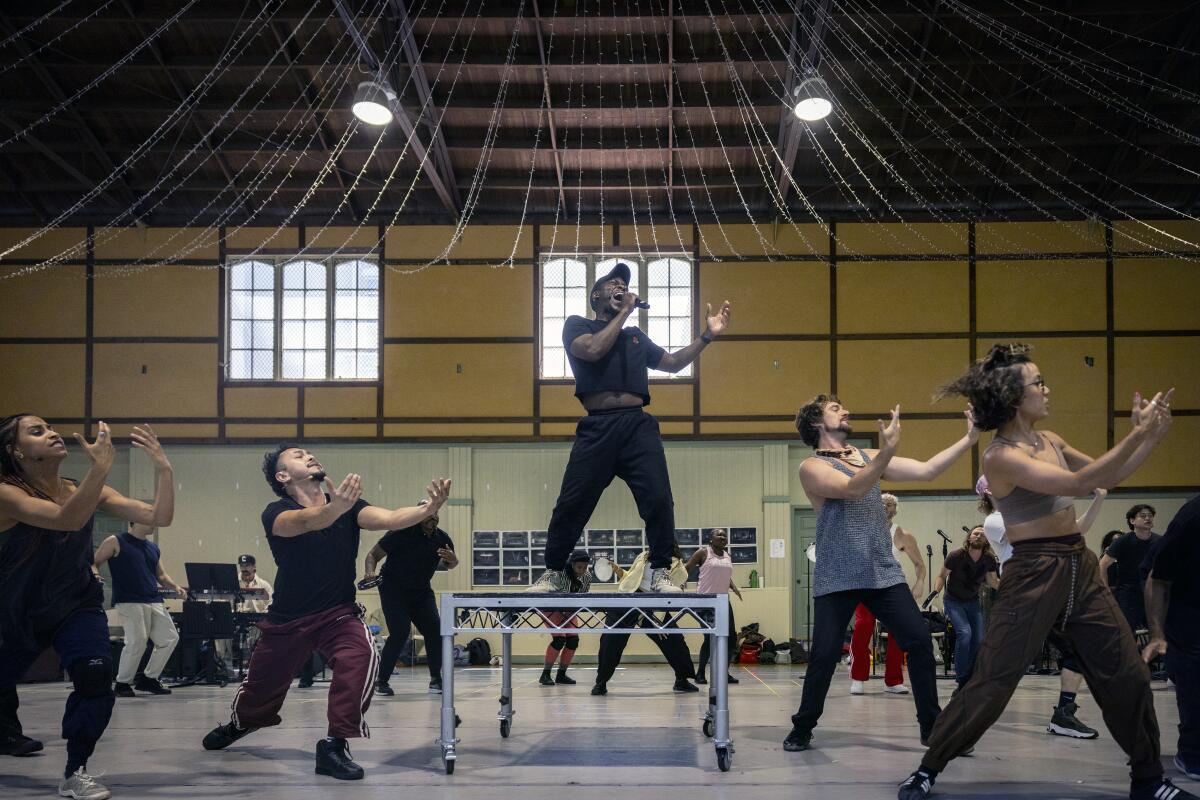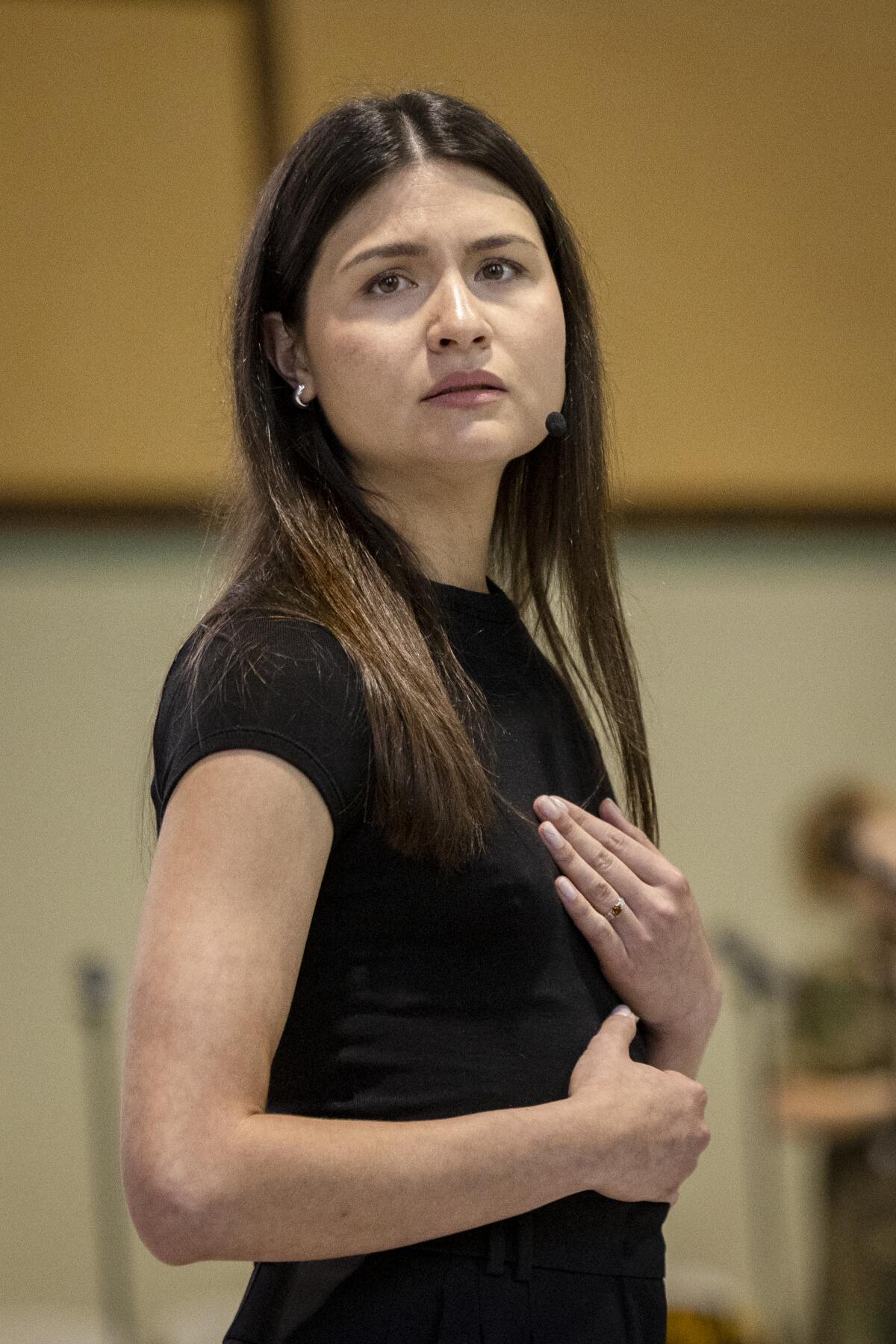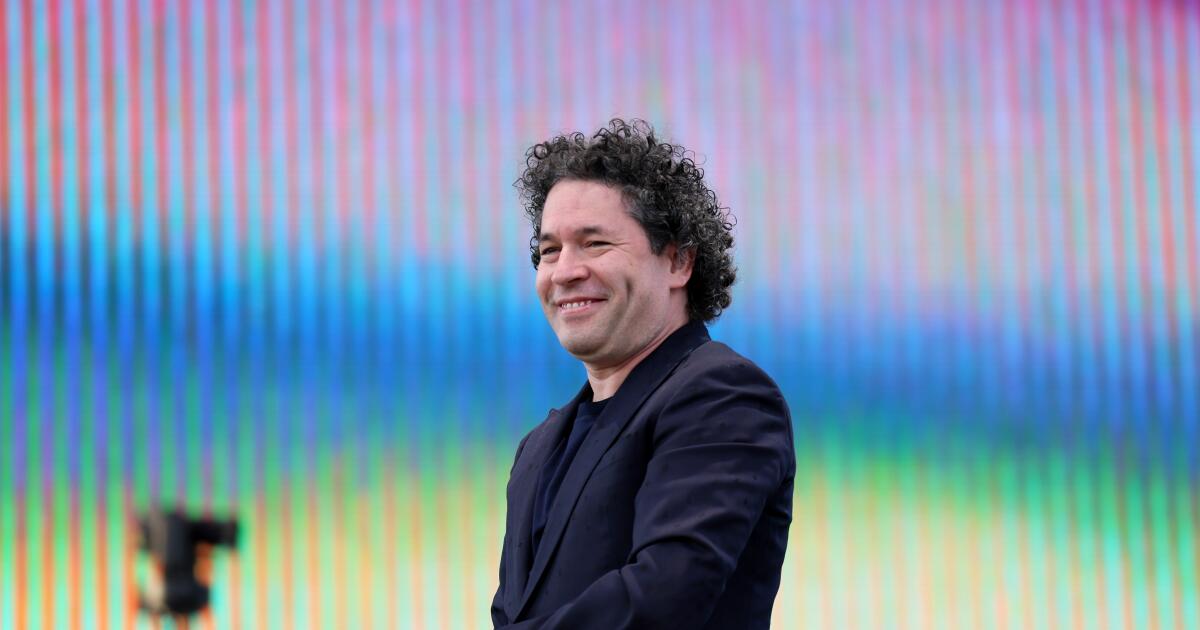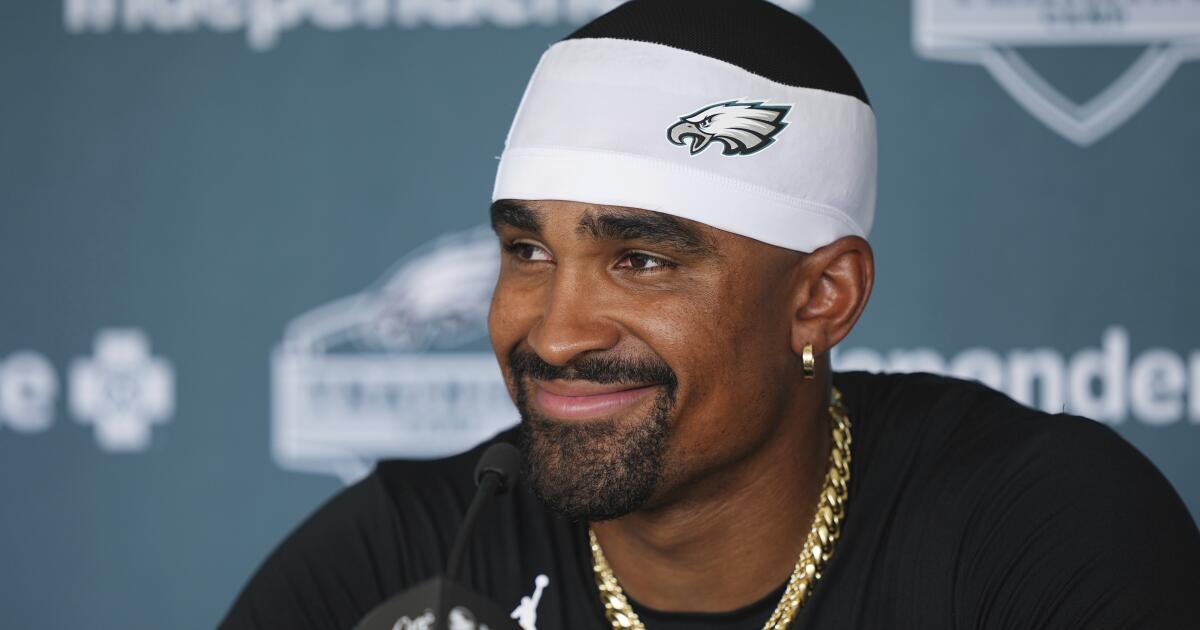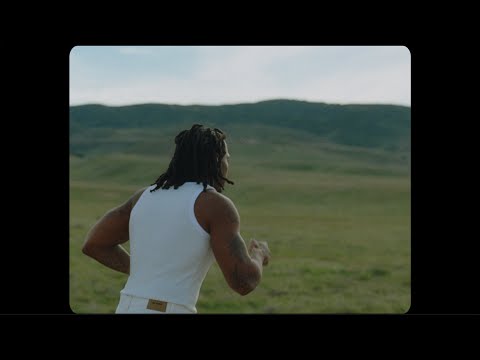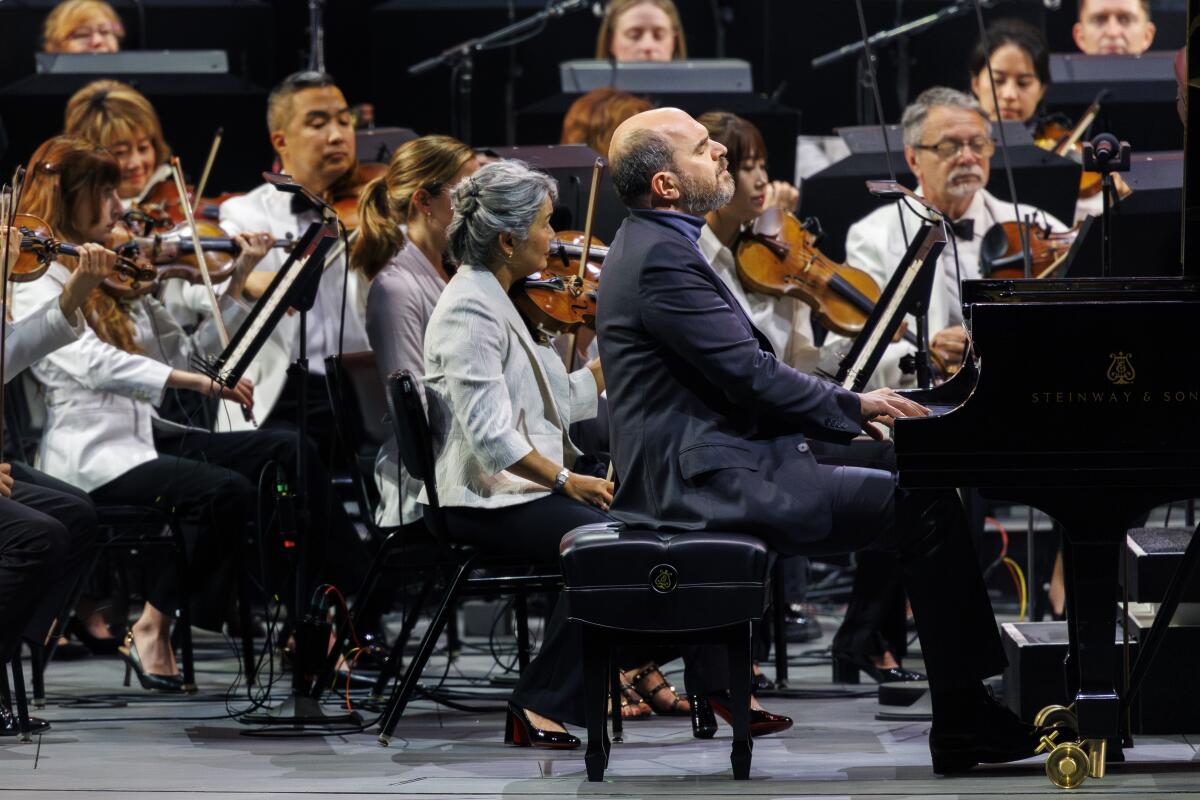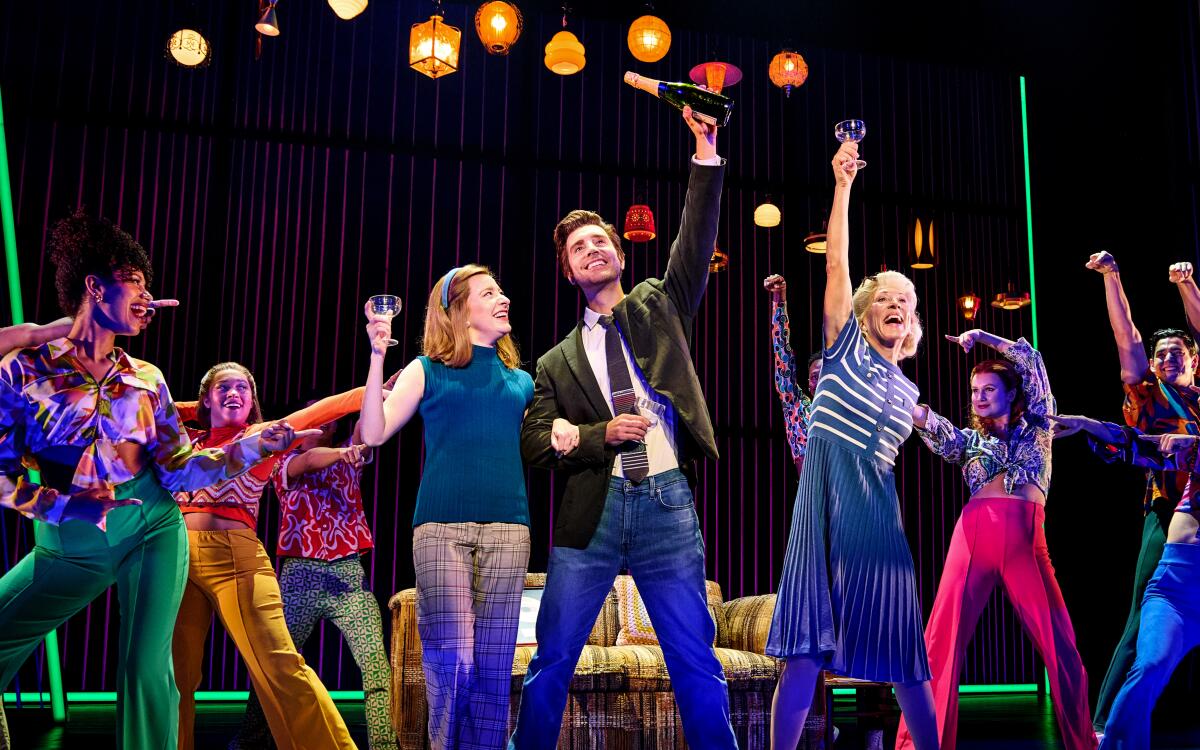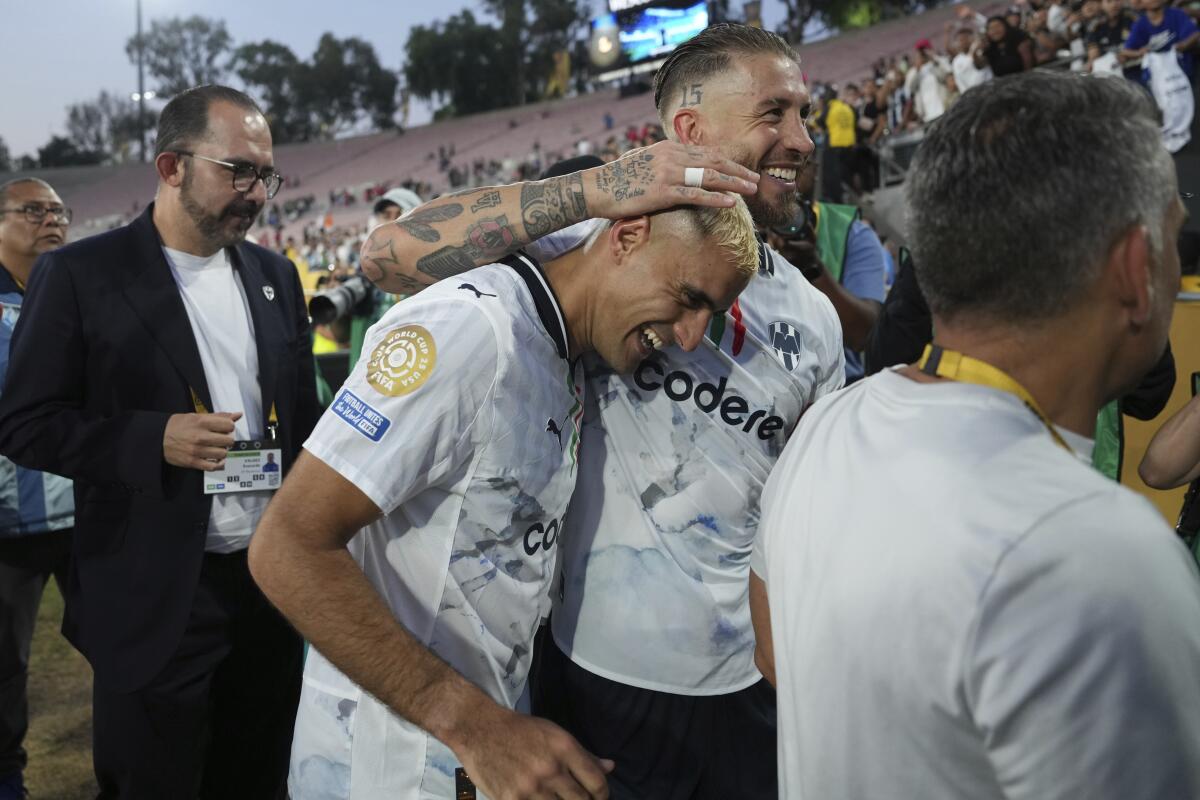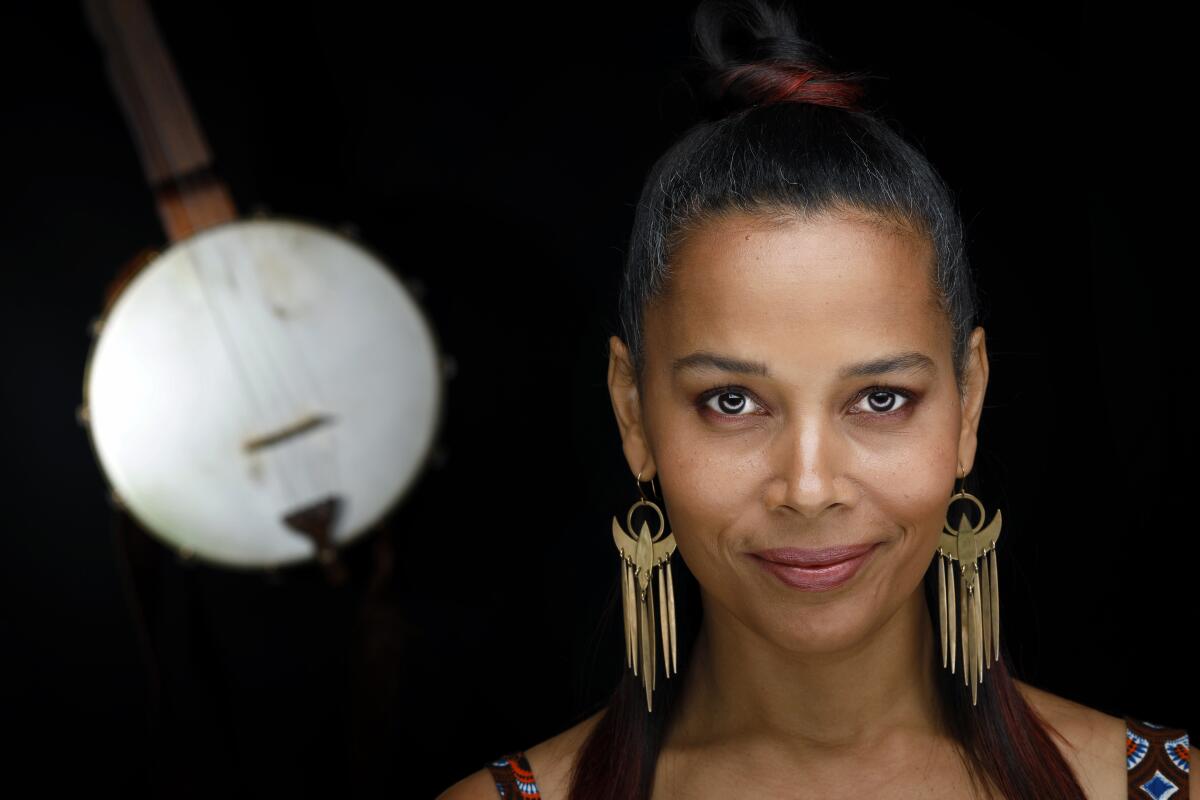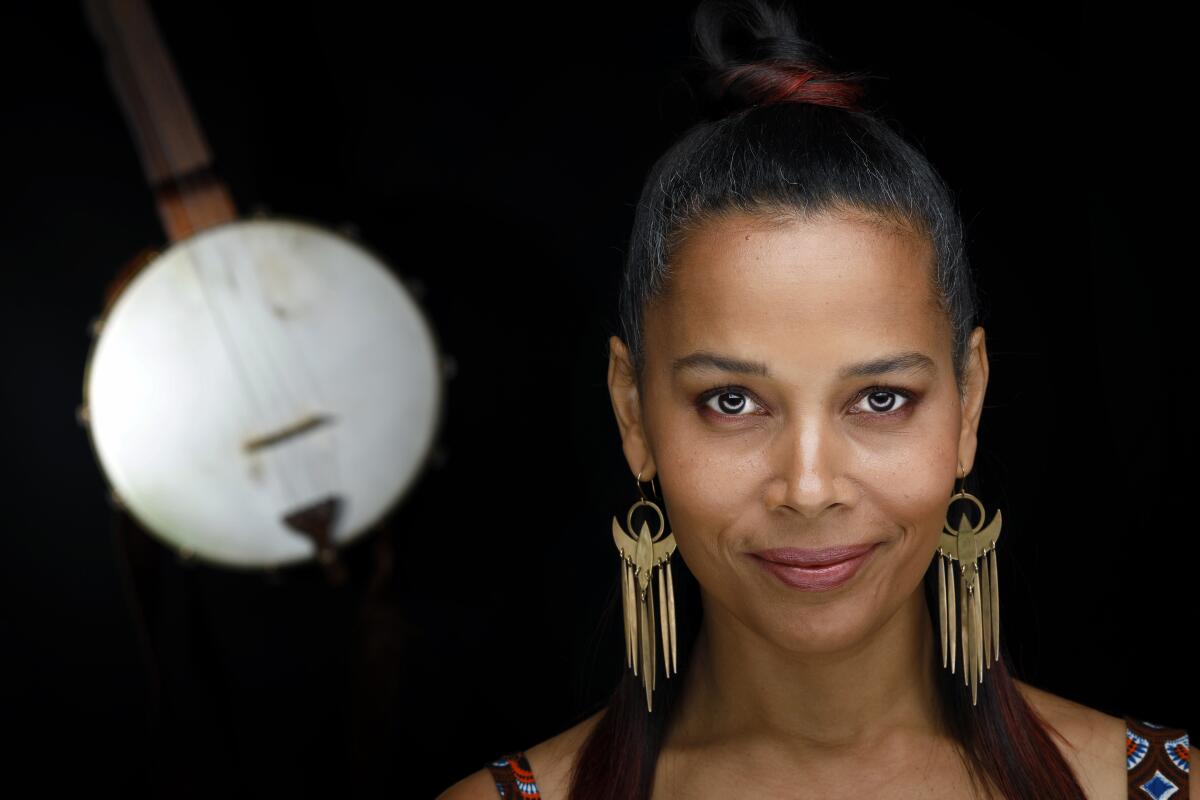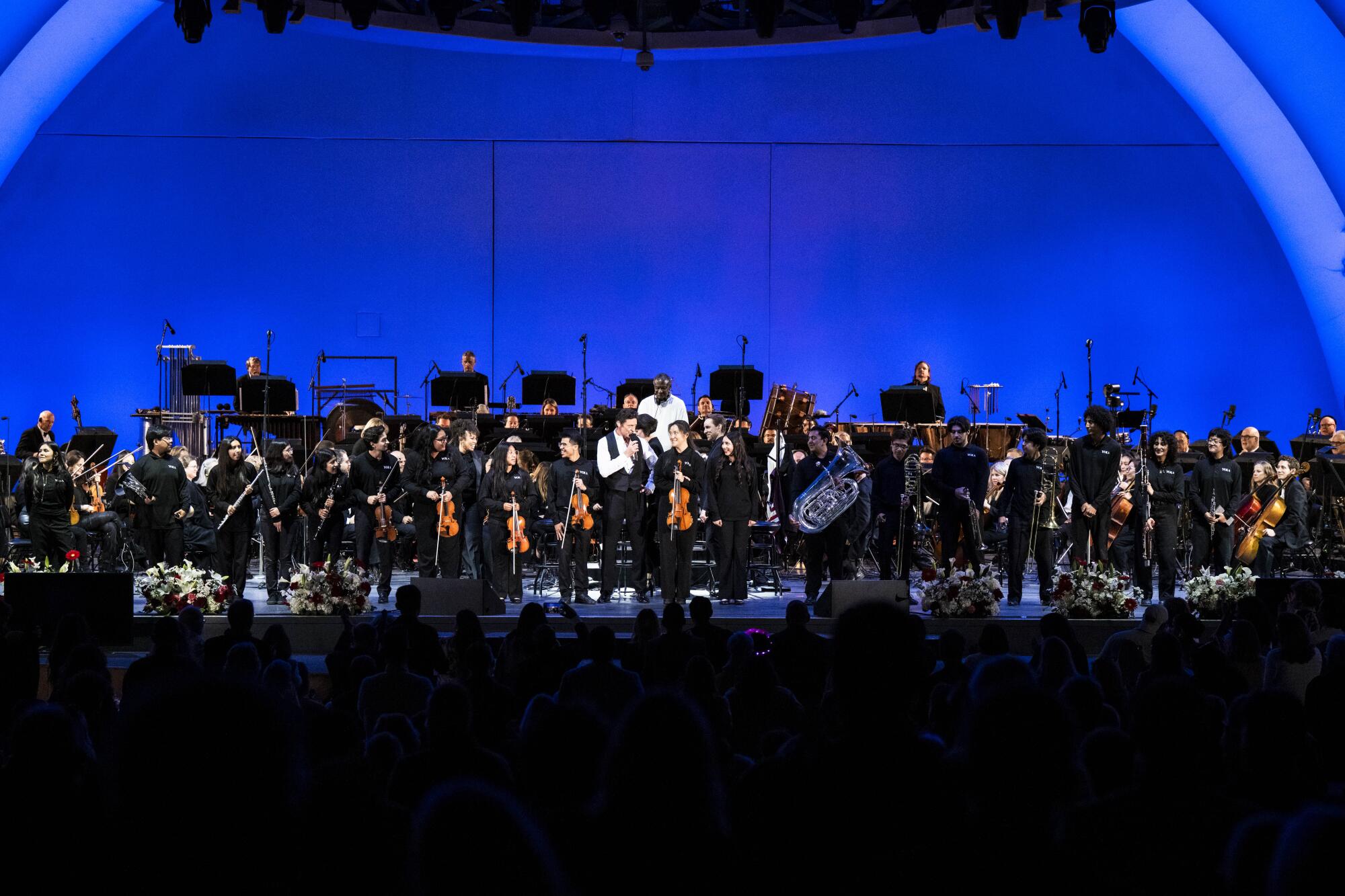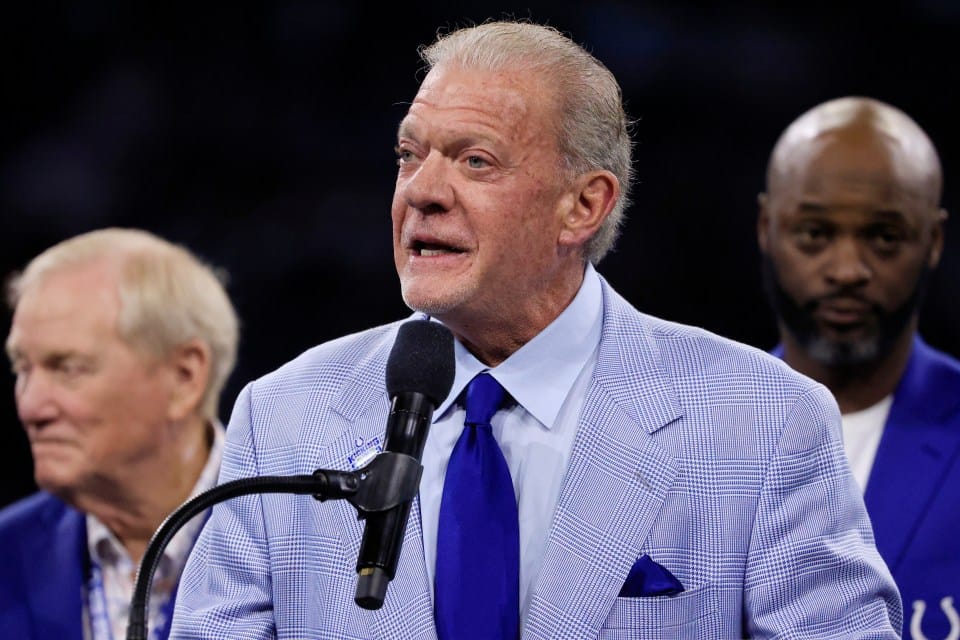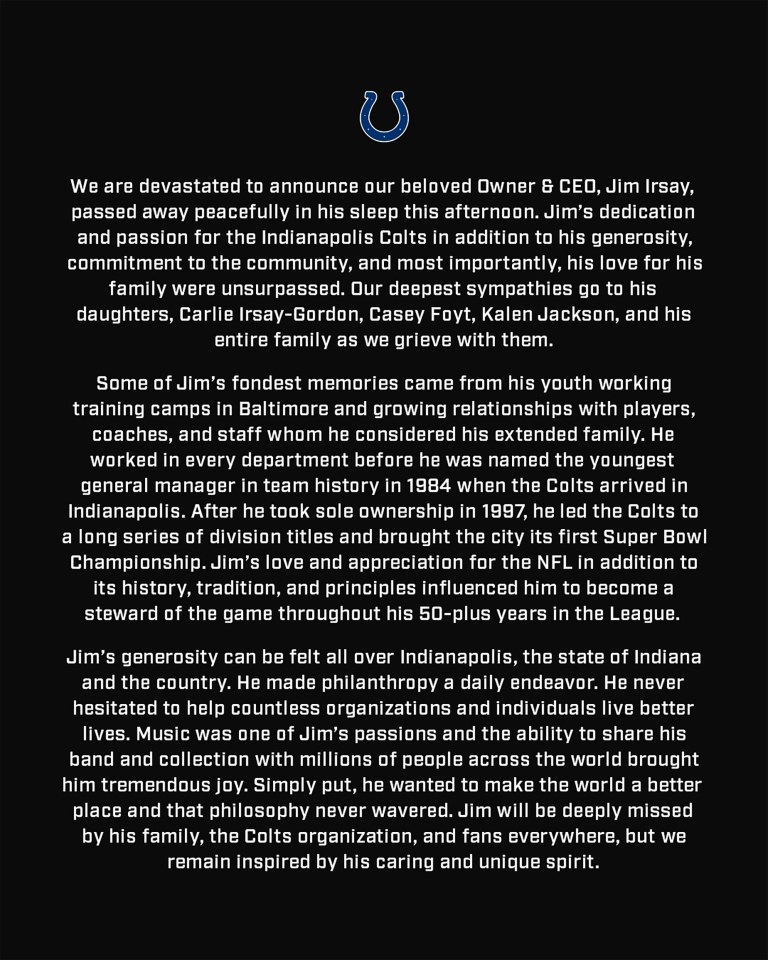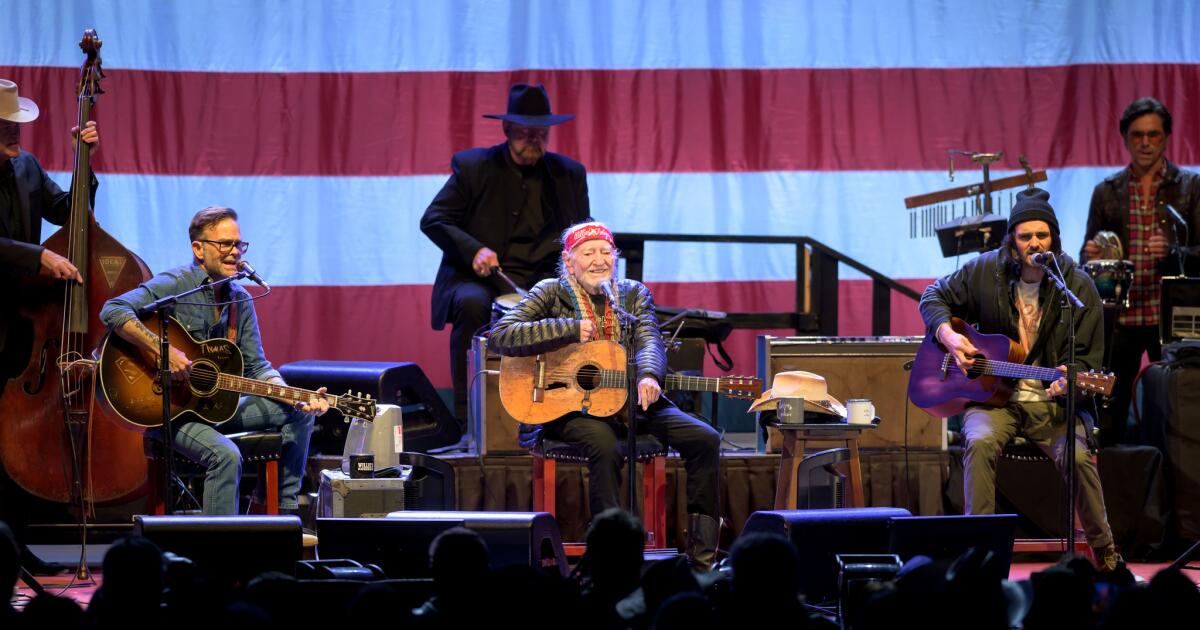UCLA Unlocked: A live bear mascot and other fun suggestions to fill Rose Bowl
Every man, woman and child deserves only the best fan experience at the Rose Bowl.
Too few are getting it, leading to dwindling UCLA football attendance over the last decade-plus.
The sad phenomenon is only partly attributable to mediocre teams. In 2022, the Bruins got off to a 6-0 start, rising to No. 9 in the national rankings, and still averaged just 41,593 fans for home games over the season.
Newsletter
Sign up for UCLA Unlocked
A weekly newsletter offering big game takeaways, recruiting buzz and everything you need to know about UCLA sports.
You may occasionally receive promotional content from the Los Angeles Times.
There’s an endless list of excuses for not making the drive to Pasadena. It’s too far. Traffic’s too bad. Games are too expensive. The weather’s too hot. The opponent is from the Sun Belt Conference. The Bruins are out of contention for anything meaningful. The game’s on a Friday. The game time wasn’t announced until less than a week before kickoff. The game starts too early. The game starts too late.
Since it’s not possible to move the stadium closer to campus or lower the temperature in August or September, we’re offering eight ways to make a day of Bruins football more enticing. Some of these suggestions might seem as realistic as moving the San Gabriel Mountains, but who ever imagined that UCLA would play in the Big Ten?
Give freebies: The best way to help fans stretch their entertainment dollar is to let them keep it.
Tickets are reasonably priced given they sometimes go for next to nothing on the secondary market and currently can be bought for as low as $43 for some games through UCLA, but how about offering free parking? Even if this is a cost the school has to subsidize, free parking would be a tremendous lure and goodwill gesture.
Students also should get in free. While student attendance has been robust since athletic director Martin Jarmond and his staff implemented several initiatives, it would make sense to have even more of the stadium packed with a segment of fans who tend to make the most noise and create the best atmosphere. It would also build lifelong loyalty and help pack the Rose Bowl with alumni in future seasons.
Eliminate six-day selection: Just tell us the kickoff times already. People need to plan their lives.
As of early August, the only home games with known kickoff times are the opener against Utah on Aug. 30, which starts at 8 p.m. (yikes), and a Friday game against New Mexico on Sept. 12 that starts at 7 p.m. (good luck getting to the Rose Bowl in weekday evening traffic).
The other four home games — against Penn State, Maryland, Nebraska and Washington — all come with the dreaded TBD tag.
The uncertainty is, of course, a function of television running the sports world, waiting for the best matchups to fill prime-time slots. Fox executives don’t want to miss out on possible surprises, such as undefeated Maryland coming to the Rose Bowl in mid-October to face nationally-ranked UCLA.
Some kickoff times will be announced once it becomes clear how good the Bruins are; others won’t be known until six days before the game. The indecisiveness hurts attendance given that many fans like to plan their schedules way more than a week in advance.
No more Friday night lights: This is something else that can be blamed on greedy TV execs and conference commissioners.
Fridays should be reserved for high school football, not college games that seem out of place. And the fans seem to agree.
Recent UCLA games played on Fridays haven’t generated big crowds. Even a showdown between unbeatens when the Bruins faced Washington in 2022 drew just 41,343.
When it comes to Friday college football games, just don’t do it.
Start every game in the afternoon or early evening: Nobody wants to be getting home from the Rose Bowl after midnight.
Games that start too late also miss one of the most glorious sites in college football: sunset over the San Gabriel Mountains.
Ideal kickoff times are early to mid-afternoon, which don’t make you set an alarm clock and allow you to get home in time to watch some game involving Hawaii or Boise State.
Bring in a live bear cub mascot: How much fun would it be to have a baby bear on the sideline at the Rose Bowl?
Imagine the possibilities involving “Fuzzy,” our preferred nickname. Snuggle with Fuzzy. Get your picture taken with Fuzzy. Put your fours up with Fuzzy.
Since we can feel the outrage from animal-rights activists, let’s point out that Colorado has a massive buffalo running onto the field at its home games and that UCLA once had its own live-bear mascots for games at the Coliseum into the early 1960s.
Attacked by a bear in 1932
(Los Angeles Times)
Fuzzy could probably only stick around for a season or two until he got too big and possibly tempted to chomp on someone (which actually happened in 1932). Then it would be time to introduce Fuzzy II.
Get the towel waver back on the sideline: In more than a century of UCLA football, Ed Kezirian holds the distinction of being the school’s only unbeaten coach.
OK, so he coached just one game, taking over for the Las Vegas Bowl in 2002 after the dismissal of Bob Toledo. But Kezirian is even more widely known for waving a white towel on the sideline to get players — and fans — juiced.
It was a tradition that started in 1994, coinciding with a missed Stanford field goal and a Bruins win, and formally ending in 2007 with Kezirian’s retirement as the football team’s director of academic services. It’s time to get those towels flapping again.
Wear more alternate uniforms: Fans love this stuff.
Need we remind you of all the uniform and helmet combinations at Oregon, where the Ducks sold out 110 consecutive games between 1999 and 2016?
Partnering with Nike and Jordan Brand means that there’s no shortage of cool (and marketable) possibilities for the Bruins when it comes to getting creative. Wearing all white uniforms or Gary Beban-era throwback blues once a season isn’t enough.
Bring back Geoffrey Strand on a limited basis:
Imagine the fourth quarter of a taut game, the Bruins needing to drive 75 yards for the go-ahead score against Penn State.
That would be the perfect time to unveil a secret, deafening weapon.
“All right, I need every man, woman and child on their feet!” Strand would yell through a microphone, triggering a huge roar.
The world’s oldest cheerleader hung up his tattered blue-and-yellow sweater and newsboy cap after the 2013 season, a year after he was briefly suspended for referencing the Taliban in cheers and allegedly using a golf cart without authorization.
But no one loves UCLA more, and no one could revitalize his alma mater quite like him.
Finding a new voice
Josh Lewin, UCLA’s lead radio announcer, has gone Hollywood.
Don’t worry, not in that way; he’s just taking a cue from his environment.
“This is L.A.” Lewin said, “and this is where creative things get made.”
Given an extended break in his schedule after calling his last Major League Baseball game in 2019, Lewin has pivoted to producing a series of soccer documentaries in his free time between the end of the Bruins men’s basketball season and the start of the football season.
His latest project, a series on Cambridge United Football Club’s attempt to extricate itself from hard times, will air its third and final segment Saturday on CBS Sports Network. It’s the sixth documentary that Lewin has produced, including others on English and American soccer.
“I’m building the airplane as I’m flying it — I mean, I never went to film school, never went to business school,” said Lewin, who earlier this year launched Josh Lewin Productions. “I really only trained to be a play-by-play guy and that’s been great, it’s made me a nice living and I love doing it, but this is just a really interesting way to learn how to connect with fans at kind of a deeper level.”
Lewin’s first project, “Five Dollar Derby,” pitted three American owners of English soccer teams against one another in a manner reminiscent of “Trading Places” — the owners placed a $5 bet among themselves to see who would fare the best. You can watch a trailer for “Five Dollar Derby” here.
When he started making documentaries, Lewin fully immersed himself in every aspect. He wrote, produced, directed, narrated and served as musical director — “everything but key grip,” he quipped — but has since ceded some of those duties to others with more experience to enhance the production quality.
“It’s been a really interesting side hustle, I guess you could call it,” Lewin said. “I’ve learned so much about soccer, England and filmmaking, three things that I really didn’t have on my plate before all this happened.”
After calling the Rams’ game against Dallas on Saturday at SoFi Stadium for Compass Media Network, Lewin will savor the airing of his soccer documentary before preparing to shift back into his usual work flow.
“That’s the perfect time to hit the pause button,” Lewin said, “because Bruins season begins exactly two weeks later and there are 19 new starters to learn about, so it’s time to shift back into Bruins mode.”
Olympic sport spotlight: Women’s soccer
UCLA women’s soccer coach Margueritte Aozasa gets water dumped on her after winning the Division I title in 2022.
(Eakin Howard / Getty Images)
Curt Cignetti, Indiana’s football coach, once said that he wins, just Google him.
Well, Margueritte Aozasa can top that.
She only wins championships, just check her assortment of trophies.
In her three seasons guiding UCLA’s women’s soccer team, Aozasa has won one NCAA championship and two conference titles, including a Big Ten tournament championship last season that made her team the first in UCLA history to take home a Big Ten title. The Bruins went on to reach the second round of the NCAA tournament.
UCLA should be back in contention for another national championship this season thanks in part to the return of skilled midfielder Emma Egizii and forward Lexi Wright, members of the 2022 national title team who were lost for much of last season because of injuries. Also returning are defender Nicki Fraser, the reigning Big Ten freshman of the year, and midfielder Val Vargas, who was a third-team all-conference selection a year ago.
Pulling it all together will be Aozasa, one of Jarmond’s best hires. Her team will be the first on campus to open the 2025-26 UCLA sports calendar when it travels to face Georgia in Athens, Ga., on Thursday.
Mount Rushmore results
Jonathan Ogden with his bust during the induction ceremony at the Pro Football Hall of Fame in 2013.
(David Richard / Associated Press)
A mountain of a man might be the preeminent face of UCLA football.
Jonathan Ogden was the leading vote-getter in our Mount Rushmore of UCLA football survey, the 6-foot-9, 345-pound offensive tackle named on 282 of 417 ballots. The others who made the cut were coach Terry Donahue (named on 227 ballots) and quarterbacks Troy Aikman (191) and Gary Beban (182).
The next four were safety Kenny Easley (136), linebacker Jerry Robinson (100), coach Red Sanders (93) and halfback Jackie Robinson (82).
Others named on at least five ballots: Maurice Jones-Drew, DeShaun Foster, John Lee, Marcedes Lewis, Cade McNown, Jim Mora, Ken Norton Jr., Tommy Prothro, John Sciarra, JJ Stokes, Bob Toledo, Wendell Tyler and Dick Vermeil.
Opinion time
Which UCLA football player not named Nico Iamaleava will be the team’s most important in 2025? Is it offensive tackle Courtland Ford, part of an offensive line that must protect its new quarterback? How about running back Jaivian Thomas? Wide receiver Kwazi Gilmer? Defensive tackle Gary Smith III? Linebacker Isaiah Chisom?
You can vote in our survey here.
Remember when?
The last time UCLA faced Utah in a season opener, the Bruins featured a highly touted quarterback making his first start with the program.
Sound familiar?
It was 2006, and Ben Olson, who had not started a game since his senior year at Thousand Oaks High in 2001 after making a Mormon mission, lived up to the five-star hype in shredding the Utes for 318 yards and three touchdowns. You can watch highlights from the game here. UCLA went on to finish 7-6, the season highlight coming in a 13-9 upset of second-ranked USC at the Rose Bowl.
In case you missed it
No man of mystery, UCLA quarterback Nico Iamaleava dazzles at training camp
Bringing the juice, UCLA safety Key Lawrence infuses a new defense with passion
Have something Bruin?
Do you have a comment or something you’d like to see in a future UCLA newsletter? Email me at [email protected], and follow me on X @latbbolch. To order an autographed copy of my book, “100 Things UCLA Fans Should Know & Do Before They Die,” send me an email. To get this newsletter in your inbox, click here.

